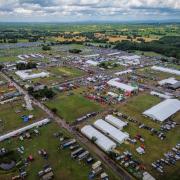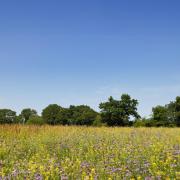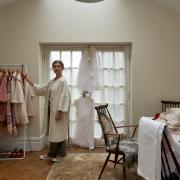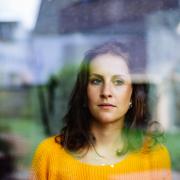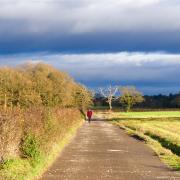James Balme crosses the Mersey and travels to the headland of the birches to visit Birkenhead Priory
Ferry cross the Mersey, circa 1150
Close to the banks of the Mersey on the Wirral Peninsula in an area historically part of Cheshire stands Birkenhead Priory – one of the oldest buildings on Merseyside.
The name of Birkenhead is believed to derive from the ‘headland of birch trees’ and over time birch was referred to as Birken and the headland became head.
In the year 1150 AD, 16 Benedictine monks under the instructions of Hamon de Massey, 3rd Baron of Dunham Massey in Cheshire founded the priory at Birkenhead in honour of St James and Hamon. When the order arrived, the local population was sparse but the new priory and a ferry service across the Mersey made the region more accessible and habitable.
The first ferry across the Mersey was operated from as early as 1150 and the Black Monks, as they were known due to their dark robes, would row twice daily across the river, taking passengers for no charge, until 1330 when a charter was granted by King Edward III giving the ferrymen permission to levy a fee for each crossing.
For a man on a horse, they would charge tuppence. Foot passengers could cross for one farthing, although on a Saturday, which was Liverpool's market day, the prices went up to half a penny, which included as much as a traveller could carry.
In medieval times the Mersey was a much greater body of water than today and during bad weather, ferry journeys had to be postponed. When this happened, stranded passengers were accommodated on the priory side until it was safe to cross, staying in the nearby great hall. In 1318, King Edward granted a licence to the priors to allow them to erect houses for those waiting to cross the river.
Birkenhead Priory was no stranger to royal visitors and in both 1275 and 1277, King Edward I visited with his wife, Queen Eleanor of Castile, and an entourage of some 600 men. During the visit of 1277, the king met with envoys from the King of Scotland to discuss the disputes raging along the Welsh border.
In 1536 the priory fell victim to King Henry VIII's Dissolution of Monasteries. Birkenhead was one of the first to be disbanded and the dislodged monks were each given 40 shillings by the Crown, along with new gowns. The prior at Birkenhead was given a pension of 12 pounds a year and he and his four monks were allowed to carry on as priests in the area.
Today the priory is a scheduled monument and is open to visitors.
My film, A Potted History of Birkenhead Priory, can be viewed for free with many other local history films by visiting my channel, youtube.com/Tvpresenter4history.
Look out for
The Chapter House, built in the 1150s as a meeting place for the monks
St Mary’s Tower – climb the 101 steps to the top to see breathtaking views across the Mersey
The on-site museum detailing the history of the priory






